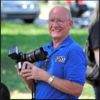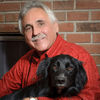Auto ISO
Jan 12, 2019 06:45:41 #
Almostageezer wrote:
I think that auto iso works best on manual exposure settings. You set aperture and shutter speed parameters and then let the iso be the variable. You can use limits for the iso as well.
This is how I shoot most of the time, except when doing strobe work.
Jan 12, 2019 07:02:10 #
tcthome
Loc: NJ
rbmitch123 wrote:
In taking a long exposure photo, say 2 seconds, would you ever keep your camera on auto ISO? Most cases I am shooting with Aperture priory and Auto ISO. For this discussion I would be shooting a landscape photo at dusk or in the dark.
Full manual, ISO 100-200, spot metering, pic your aperture setting, most likely f8-f11) meter to the left or right of the sun.( adjust shutter for the correct exposure. As the sun sets or rises, you will need to adjust your shutter accordingly.
On my wide angle lens , I usually set my distance scale between infinity & 1.
Jan 12, 2019 07:03:26 #
tcthome
Loc: NJ
nimbushopper wrote:
This is how I shoot most of the time, except when doing strobe work.
I like this for wildlife in light changing conditions.
Jan 12, 2019 07:06:03 #
rmalarz wrote:
I never put my camera on auto ISO.
--Bob
--Bob





I have rarely done so, but for quick lower light shots of the cats for FB but nothing serious.
Jan 12, 2019 07:14:08 #
What works for me is the lowest iso the camera has, an aperture that I think gives me enough focus throughout the shot I'm looking to get normally around f13, and then just changing the shutter speed accordingly. I also tend to underexpose and let lightroom adjust that later. I tend to go out when its pitch black and get set up so my shutter speed starts out in bulb and can go for a couple minutes easily and as time goes by, starts to get much faster as the sun rises and I tend to leave when the shutter speed is around 1/400 or so. Obviously the reverse at sunset. I find having the lowest iso and changing just one variable, shutter speed, works for me. I'm only a year into this so what i say has to be taken in that context however today, I don't use auto iso for landscapes. Trying to get pictures of birds in the woods? Different story.
Jan 12, 2019 07:23:07 #
tcthome wrote:
I like this for wildlife in light changing conditions.
Yes, it's almost a necessity in those conditions!
Jan 12, 2019 07:43:59 #
take the first shot with manual settings, set your shutter speed and aperture and auto ISO, see what your getting with the ISO the camera wants to use then set the ISO manually for best exposure. Personally, I prefer Shutter Priority and set my ISO to what I think it should be and let aperture adjust. I'm more about shutter speed than aperture.
Jan 12, 2019 07:48:03 #
billnikon
Loc: Pennsylvania/Ohio/Florida/Maui/Oregon/Vermont
rbmitch123 wrote:
In taking a long exposure photo, say 2 seconds, would you ever keep your camera on auto ISO? Most cases I am shooting with Aperture priory and Auto ISO. For this discussion I would be shooting a landscape photo at dusk or in the dark.
I like to control my shots. I would never use auto ISO although many here use it all the time. I like to control the ISO because of the noise that is introduced at higher ISO's. Since you are not shooting quickly and your on a tripod, you have the time to control more of your camera options.
Jan 12, 2019 08:30:46 #
Jeffcs
Loc: Myrtle Beach South Carolina
Auto ISO is a good tool when you have a specific need
That said I NEVER use A-ISO for anything but when I’m shooting High School sports as the lightning changes too much between 10 yard line to the 30 yard line or often even on a basketball court
When I’m out shooting landscapes I’m looking for lowest possible ISO
That said I NEVER use A-ISO for anything but when I’m shooting High School sports as the lightning changes too much between 10 yard line to the 30 yard line or often even on a basketball court
When I’m out shooting landscapes I’m looking for lowest possible ISO
Jan 12, 2019 08:37:06 #
Rather than spend time wondering about and debating auto ISO, you would be better spending your time fine-tuning your understanding of exposure compensation and when the camera's metering is most likely to be caught out. EC enables you to override the settings in auto ISO mode while at the same time you can take advantage of the camera's ability to automatically give you suitable settings - you just need to understand when those settings are likely to be something other than optimal, and you'll get that from understanding EC.
Jan 12, 2019 08:45:00 #
I am from the old school and a year ago, I would never have dared use auto ISO. But since I've started taking pictures for the local Christian school of student life and indoor sports, I find that I am relying on it a lot more now. It keeps me from missing the candid shots that you cannot recreate if you are at the wrong ISO setting. I will not use auto if I am outside shooting soccer or baseball since the light is consistent there, but indoors, who knows what the next encounter will be. I go from darker classrooms to window light in an instant and don't have time to change ISO values. So because of the need to catch students in their moments of "candicity" (did I just invent a new word?) or moments of candidness, I set my aperture for 5.6, shutter at 1/500 and auto ISO. So auto ISO can be a very valuable tool depending upon what you are photographing.
Jan 12, 2019 08:54:27 #
rbmitch123 wrote:
In taking a long exposure photo, say 2 seconds, would you ever keep your camera on auto ISO? Most cases I am shooting with Aperture priory and Auto ISO. For this discussion I would be shooting a landscape photo at dusk or in the dark.
No. With auto ISO the result will be somewhat predictable - the camera will choose the highest ISO you have allowed in settings, which will be the noisiest. You are probably on a tripod, so no need to go to a higher ISO to keep shutter speed up. Set it for the lowest ISO and fix any noise in post.
Jan 12, 2019 08:59:52 #
Thrawn John
Loc: Scotland
If you usually shoot Auto ISO, no reason to change for a longer exposure. (If it goes so high that the resulting noise is hideous, you'd just make the exposure longer still.)
With film, there's an issue of Reciprocity Failure in low light / long exposures where, beyond around a couple of second it's not getting enough photons to react with the chemistry and the standard "exposure triangle" doesn't work. (e.g. opening up another stop or doubling the exposure duration doesn't make the image twice as bright - instead, you have to make a much bigger adjustment to get enough light in than you would expect and it gets proportionally worse the slower the exposure is.)
Good news - it doesn't particularly affect digital sensors, so shoot away.
(FWIW, I tend to shoot full manual but I'm not going to go on a moral crusade about it. Do what gets the results you want.)
With film, there's an issue of Reciprocity Failure in low light / long exposures where, beyond around a couple of second it's not getting enough photons to react with the chemistry and the standard "exposure triangle" doesn't work. (e.g. opening up another stop or doubling the exposure duration doesn't make the image twice as bright - instead, you have to make a much bigger adjustment to get enough light in than you would expect and it gets proportionally worse the slower the exposure is.)
Good news - it doesn't particularly affect digital sensors, so shoot away.
(FWIW, I tend to shoot full manual but I'm not going to go on a moral crusade about it. Do what gets the results you want.)
Jan 12, 2019 09:16:41 #
NCMtnMan
Loc: N. Fork New River, Ashe Co., NC
Use whatever your camera offers to get the shot that you want. If you want to be in "total control", then that means manual focus as well. All my vehicles have cruise control on them. I never use it because I don't like the feeling of not controlling that part of my driving. Others use it constantly. So it's whatever works for you!
Jan 12, 2019 09:21:21 #
leftj
Loc: Texas
rmalarz wrote:
I never put my camera on auto ISO.
--Bob
--Bob
This is a meaningless answer. It is not specific to the question.
If you want to reply, then register here. Registration is free and your account is created instantly, so you can post right away.




